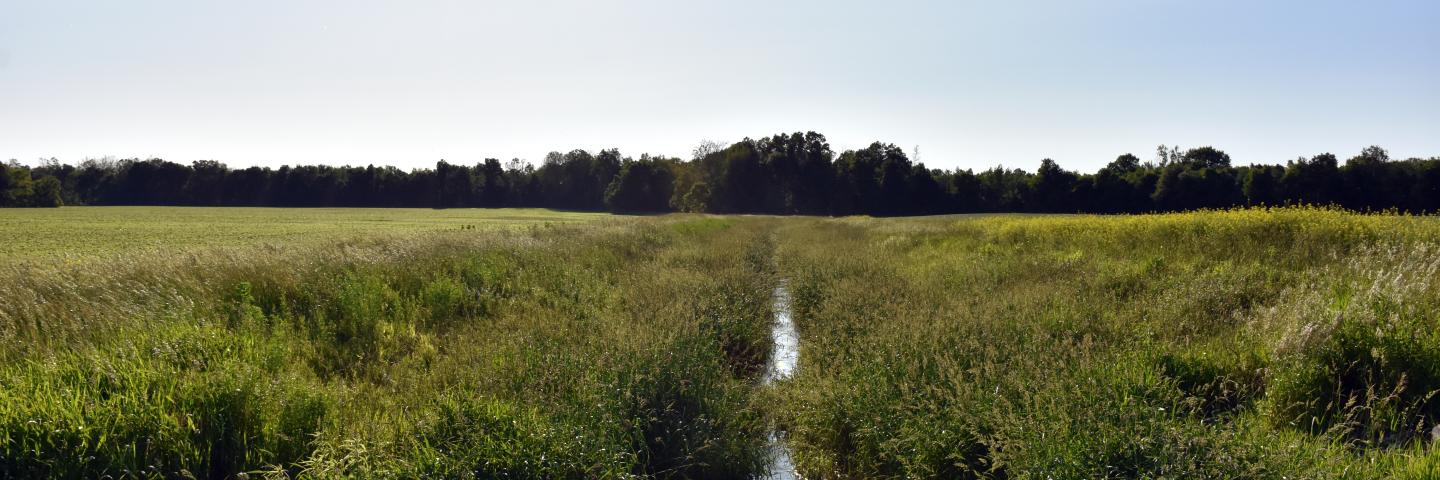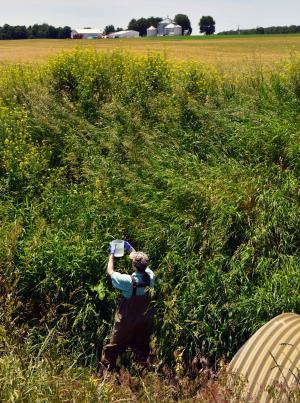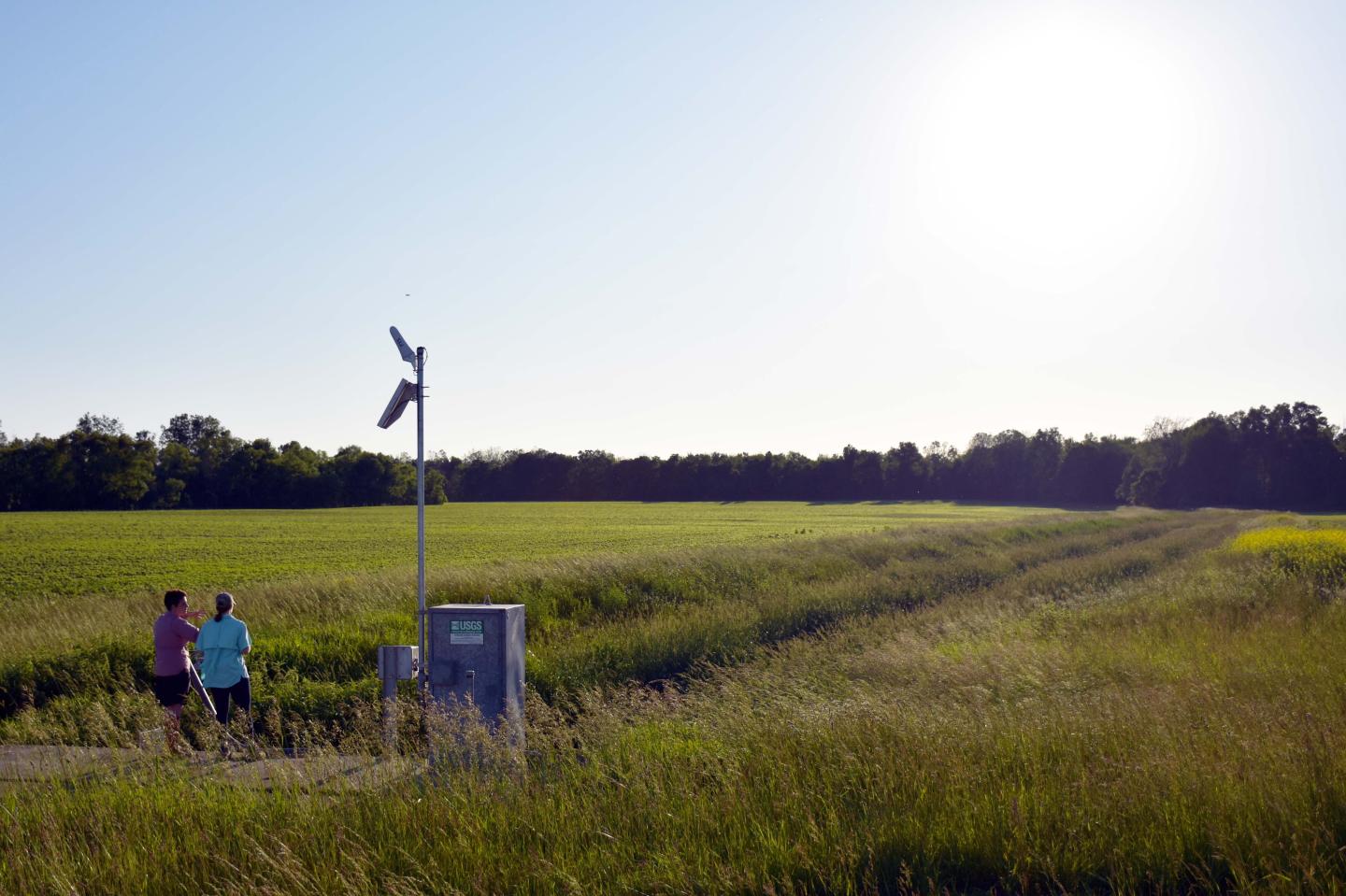
Press Release


Indiana Application Cutoff Dates have been set: November 21 for easements, December 5 for land management practices

Through RCPP, NRCS seeks to co-invest with partners to implement projects that demonstrate innovative solutions to conservation challenges and provide measurable improvements and outcomes tied to the resource concerns they seek to address.
The 2018 Farm Bill made a number of substantial changes to RCPP:
Read more about RCPP in Action: Success Stories
RCPP projects may include a range of on-the-ground conservation activities implemented by farmers, ranchers and forest landowners. These activities include:
A single RCPP project application can propose to employ any combination of these eligible activity types as part of an RCPP project. For more details about eligible RCPP conservation activities, please see the RCPP funding announcement.
RCPP funding is divided evenly among two funding pools:

Critical Conservation Areas
For projects in eight geographic areas chosen by the Secretary of Agriculture. These receive 50 percent of funding. Learn more about RCPP Critical Conservation Areas.

State/Multistate
For projects in a single state or across several states. These receive 50 percent of funding.
Eligible organizations interested in partnering with NRCS on conservation projects can develop applications for the RCPP competition. The lead partner for an RCPP project is the entity that submits an application, and if selected for an award is ultimately responsible for collaborating with NRCS to successfully complete an RCPP project.
See the RCPP funding announcement for details about what types of organizations are eligible to apply.
Once NRCS selects a project and executes an RCPP agreement with a lead partner, agricultural producers may participate in an RCPP project in one of two ways. First, producers may engage with project partners and delegate a willing partner to act as their representative in working with NRCS. Second, producers seeking to carry out conservation activities consistent with a RCPP project in the project’s geographic area can apply directly to NRCS.
RCPP projects must be carried out on agricultural or nonindustrial private forest land or associated land on which NRCS determines an eligible activity would help achieve conservation benefits (i.e., improved condition of natural resources resulting from implementation of conservation activities).
Eligible conservation activities may be implemented on public lands when those activities will benefit eligible lands as determined by NRCS and are included in the scope of an approved RCPP project.

Potential partners are invited to propose RCPP projects where NRCS and partners co-invest in impactful and innovative solutions to on-farm, watershed, and regional natural resource concerns.

The Tri-State Collaboration Effort will allow three states — Indiana, Michigan and Ohio — to come together to work with farmers, universities and non-governmental organizations and offer financial assistance to producers.
The project leverages $13.5 million in support from partners to place conservation best management practices on the ground, and educate landowners on the importance of soil health and decreased nutrient loading.
The primary goal of this multi-state project is to protect the western basin of Lake Erie by reducing phosphorus and sediment loading, and algal blooms by using a suite of conservation practices working towards a 40% reduction of dissolved phosphorus. Also, this project will assist with meeting the goals of each state’s respective Domestic Action Plan to reduce total phosphorus and soluble reactive phosphorus through nutrient management and best management practices.
The project area targets the Maumee headwaters, identified as a higher source of phosphorus loadings. Our goals include furthering conservation, restoration and sustainable use of soil, water and wildlife on a watershed scale and encouraging partner groups to work with producers to meet or avoid the need for national, state, and local natural resource regulatory requirements.

The Big Pine Watershed Partnership will engage the power of the supply chain and the trust of agronomy retailers to further conservation in Indiana’s Big Pine Creek Watershed through the targeted implementation of nutrient and sediment reducing practices to achieve watershed water quality objectives.
The Nature Conservancy, Benton County SWCD, Warren County SWCD and White County SWCD are proud to partner with Ceres Solutions and Land O Lakes to scale targeted conservation in Indiana’s Big Pine Creek Watershed. The Big Pine Creek watershed, located in west-central Indiana, is a tributary of the Wabash River and part of the Mississippi River Basin drainage.
Through the Big Pine Creek Watershed Partnership, agronomists and crop advisors from Ceres Solution within the watershed will engage growers to adopt practices utilizing EQIP that can improve nutrient efficiency, soil health, and water quality.
The Nature Conservancy will work with Ceres Solutions and Land O Lakes Truterra to target grower engagement and practice enrollment to locations most likely to produce greatest conservation return (tons of sediment or pounds of nutrients retained per EQIP dollars spent).
The project partners will also work to streamline grower screening and enrollment for EQIP participation through the use of Ceres Solutions and Land O Lakes precision agronomic tools. Both practices and acreage targets will greatly accelerate progress towards long-term Best Management Practice targets identified in the recently completed Big Pine Creek and Mud Pine Creek Watershed Management Plan.

The Farmers Helping Hellbenders Initiative was developed by 14 partnering conservation and agriculture organizations and will address the recovery of the Eastern Hellbenders and improvement of aquatic resources in the Blue River watershed by increasing enrollment in agricultural conservation practices.
The primary goal of this initiative is to expand the use of agricultural conservation practices, which should lead to decreased sedimentation in rivers systems and improvements in aquatic resources. Secondarily, these practices should lead to increased soil retention and nutrient availability for farmers.
The initiative will target agricultural lands in Washington, Harrison, Crawford, and Floyd Counties, the only remaining area in Indiana where the Eastern Hellbender can be found and is currently being actively managed.

Through this multistate project Illinois and Indiana will work together to improve the overall health of the iconic Kankakee and Iroquois watersheds. In total, $7.9M will be leveraged from partners. The diversity of partners will be critical to the overall success of this project.
The project aims to work with all types of landowners including from forest ground, urban or specialty crop and traditional farmers to municipalities, to install conservation practices and engage in education and outreach efforts. The primary goal of this multi-state initiative is to address excess water as a resource concern by developing working lands type conservation practices and voluntarily establishing wetland easements.
These conservation efforts facilitate water storage, build community involvement, and improve water quality within the initiative focal region. In the first year, a steering committee will be formed that will use the existing Kankakee Work Plan to create an annual work plan with action items that the partnership can work towards. This initiative will seek to accomplish nutrient reduction goals in both participating states.
These goals outline efforts to reduce nutrient runoff from point and non-point sources alike, toward improving water bodies and downstream to the Mississippi River and ultimately the Gulf of Mexico. This initiative will further efforts of conservation, restoration and sustainable use of soil, water and wildlife on a watershed scale while encouraging partner groups to work with producers to meet or avoid the need for national, state, and local natural resource regulatory requirements.
The initiative goal is to install 3,000 acres of new conservation cover, two-miles of two-stage ditches, 800 acres of wetland easements, and 2500+ conservation practices to achieve nutrient reduction goals.

The Southern Indiana Sentinel Landscape is anchored by four critical DoD installations and ranges: Naval Support Activity Crane, the Lake Glendora Test Facility, Atterbury-Muscatatuck Training Center, and the Indiana Air Range Complex. These installations and ranges provide a variety of testing and training opportunities for the Army, Navy, Air Force, Marine Corps, National Guard, as well as federal and state partners. This vast landscape also contains six state parks, seven state forests, nine state fish and wildlife areas, 39 state-dedicated nature preserves, one National Forest, and three National Wildlife Refuges.
With the primary objective of preserving and protecting military mission readiness, operations, testing and training capabilities, the Southern Indiana Sentinel Landscape partners will also promote and support agricultural and working lands; provide for watershed and riparian corridor protections thus promoting landscape resiliency; sustain and restore forest lands through sustainable land management and protections; and ensure endangered, threatened and at-risk species protection through habitat preservation and restoration.
For more information visit: Southern Indiana | Sentinel Landscapes

The Grasslands for Gamebirds and Songbirds Initiative (GGS), addresses inadequate terrestrial wildlife habitat by developing grassland & pollinator habitat.
The primary goal of the initiative is to develop and manage grassland and pollinator habitat needed by “At Risk” bird species. The initiative focuses regions located strategically throughout Indiana (IN) that contain both the greatest need for grassland habitats as well as the most potential to improve grassland habitats & populations of bird species that depend upon them.
The most successful RCPP projects share four common characteristics—they innovate, leverage additional contributions, offer impactful solutions, and engage an active and effective partnership.
NRCS provides financial assistance for selected conservation practices. The availability and amount of financial assistance can vary between states. Download the Indiana payment schedules from the link below to see which activities qualify, and how much financial assistance is available.
The 2018 Farm Bill was enacted on December 20, 2018. The Farm Bill continues its strong support for conservation efforts of America’s farmers and ranchers through reauthorization and expanded flexibility of NRCS conservation programs.
For more information about NRCS programs offered in Indiana and how experts throughout the state can help you address natural resource concerns on your land, visit the Indiana NRCS homepage.
Contact your local service center to start your application.
Do you farm or ranch and want to make improvements to the land that you own or lease?
Natural Resources Conservation Service offers technical and financial assistance to help farmers, ranchers and forest landowners.

To get started with NRCS, we recommend you stop by your local NRCS field office. We’ll discuss your vision for your land.
NRCS provides landowners with free technical assistance, or advice, for their land. Common technical assistance includes: resource assessment, practice design and resource monitoring. Your conservation planner will help you determine if financial assistance is right for you.
We’ll walk you through the application process. To get started on applying for financial assistance, we’ll work with you:
Once complete, we’ll work with you on the application, or CPA 1200.
Applications for most programs are accepted on a continuous basis, but they’re considered for funding in different ranking periods. Be sure to ask your local NRCS district conservationist about the deadline for the ranking period to ensure you turn in your application in time.
As part of the application process, we’ll check to see if you are eligible. To do this, you’ll need to bring:
If you don’t have a farm number, you can get one from USDA’s Farm Service Agency. Typically, the local FSA office is located in the same building as the local NRCS office. You only need a farm number if you’re interested in financial assistance.
NRCS will take a look at the applications and rank them according to local resource concerns, the amount of conservation benefits the work will provide and the needs of applicants. View Application Ranking Dates by State.
If you’re selected, you can choose whether to sign the contract for the work to be done.
Once you sign the contract, you’ll be provided standards and specifications for completing the practice or practices, and then you will have a specified amount of time to implement. Once the work is implemented and inspected, you’ll be paid the rate of compensation for the work if it meets NRCS standards and specifications.